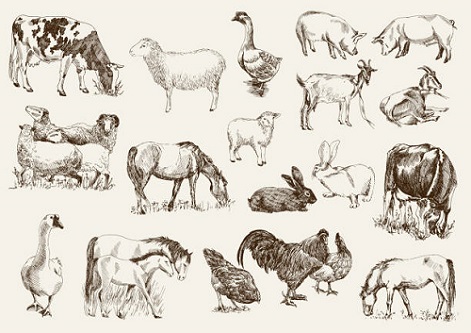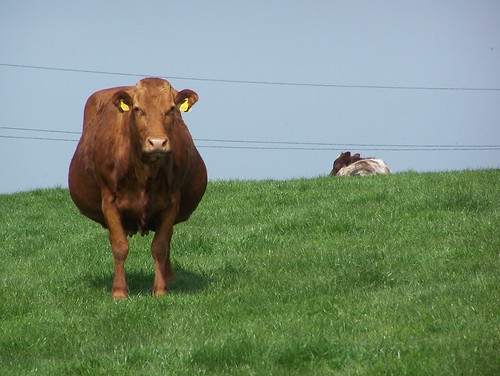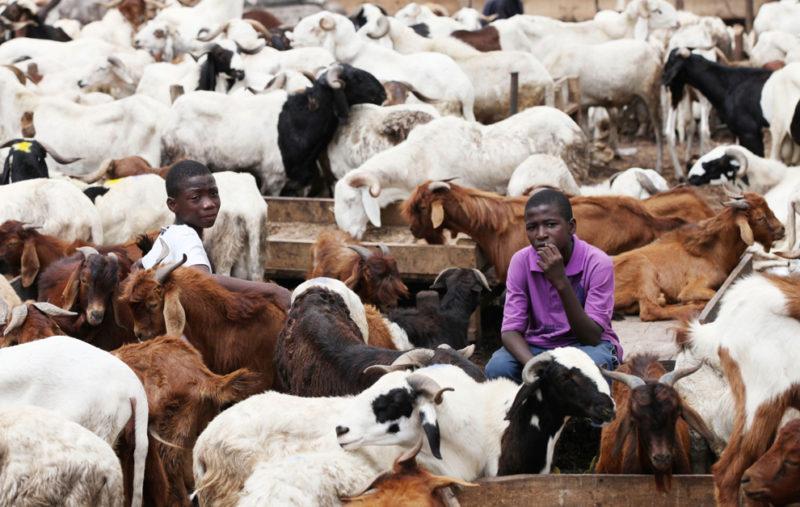What is Livestock Farming?
Livestock farming is simply the management and breeding of domestic, livestock or farm animals for the purpose of obtaining their meat and products (milk, eggs, leather, etc.). It can also be described as the economic activity that involves raising domestic animals for human consumption and obtaining meat, milk, wool, fur, and honey among others.
Livestock farming is one of the oldest economic activities of man started by early men. It guarantees food supply, hides, skins, bones, milk and other animal products without going to the forest to hunt. Livestock farming includes the breeding of cattle, sheep, pigs, goats, poultry, rabbits, snails, fish, and honeybees.
What are the Importance and Benefits of Livestock Farming?
- Livestock farming is a vital activity in the development of humanity and continues to occupy a prominent place among the primary activities of the world economy.
- It generates high-quality food products such as meat, egg, milk, cheese, etc.
- Other local economic sectors benefit directly or indirectly from its activity: food processing industries, handicrafts, tourism and hospitality.
- It is one of the few human-productive economic activities that are truly sustainable.
- It generates employment opportunities and serves as a source of income
- It can also serve as a hobby for some people.
- It can help a country to generate foreign exchange earnings through the export of livestock products. This will further strengthen the local currency value.
- Bigger animals such as cattle, horses and donkeys can be used for some special farm operations such as plowing, harrowing and even beasts of burden.
Types of Livestock Farming
There are different types of livestock farming systems that are differentiated by the production processes that take place in each of them.
1. Intensive Livestock Farming
Intensive livestock farming is one in which the animals are housed with adequate temperatures, feed and health care necessary for the production of animals to be healthy and faster. In this system, the selection of breeds is made for different types of production. It is both capital and labor-intensive.
2. Semi-intensive Livestock Farming
Semi-intensive livestock farming is one in which the animals are housed and fed, but are allowed to graze or move around the farm to scavenge within an enclosed area within the farm area.
3. Extensive Livestock Farming
Extensive livestock farming is one that is carried out on large areas of land, such as meadows, pastures or mountains so that animals graze and take advantage of the natural resources of various areas. It is usually carried out with animals that are adapted to the type of field to which they are intended to take. This system promotes the conservation of the ecosystem.
4. Nomadic Livestock Farming
Nomadic livestock farming is characterized by the grazing of animals like cattle on a large expanse of land so that they have a natural diet. In this system, the animals are taken to different lands to eat various foods and resources. This type of livestock farming is known as nomadic or semi-nomadic. It is typical of people who live in arid areas where cultivation is difficult to carry out, as in some territories in Africa and Asia.
5. Transhumant Livestock Farming
Transhumant livestock farming is one in which the animals are moved to areas whose fields have food, depending on the season of the year. This livestock farming system is very advantageous because it increases the fertility of the soils thanks to the manure of the cattle. The animals feed on various grasses and vegetables and contribute to the dispersal of seeds, among others. At the moment, the transhumant cattle ranch is little practiced. However, it is still carried out in various areas of Africa.
6. Organic Livestock Farming
Organic farming is a livestock production system with the aim of obtaining the highest quality food without using synthetic chemicals such as pesticides, chemical fertilizers, etc. In addition, animals need a large space and feed on natural products.
Livestock account represents all types of animals like cattle, buffaloes, sheep, goats, pigs, horses, etc. and they are raised mainly for meat, milk or wool production. Livestock farming is associated with the production of meat, milk and eggs from domesticated animals.



Pls where can I gain practical experience on animal husbandry that you can recommend in any part of South Western part of Nigeria? I am seriously interested in this. Thanks
I have an A-z guide send me a mail on : [email protected]
Send a mail to [email protected] for practical guide
Im writing for an opinion from someone that is educated enough to know that a human being is not defined as livestock. Some leaders in Hawaiis political world, with high ranking status has an ignorant definition as far as Humans, being considered as livestock even those that are buried in the grave (hawaiian word Kupuna Iwi). Uncontiously, these so called want to be Hawaiian people are not considered to be indigenous as I am, but instead in my eyes are just another ignorant person that wants authority from very well educated Hawaiian lady as me. As my kupuna would say in Hawaii Nei – ” No be disrespectful…respect others”.
for those livestock that are housed and fed by the farmer,are they be outside the farm in some cases?
Yes
Thanks for your advice
You’re welcome